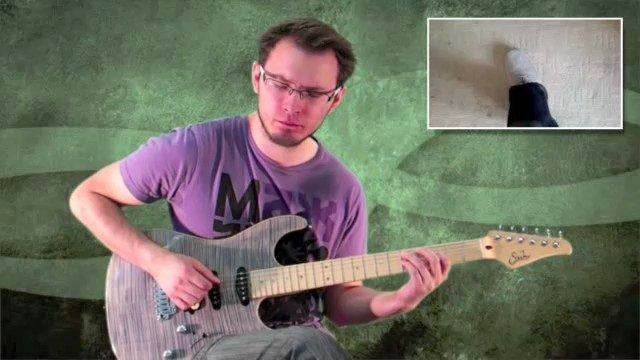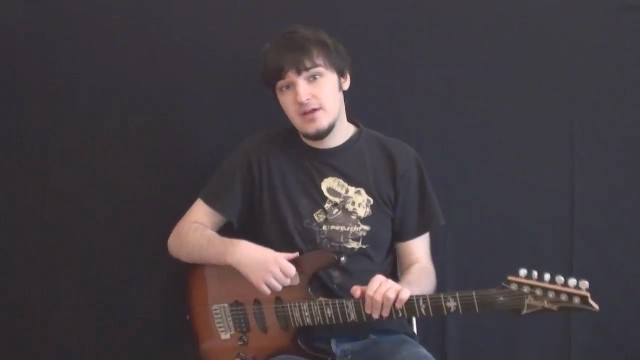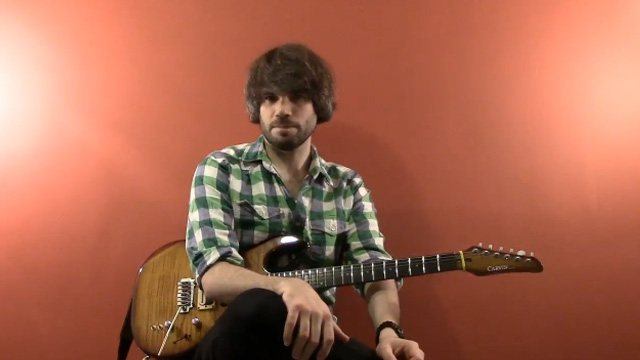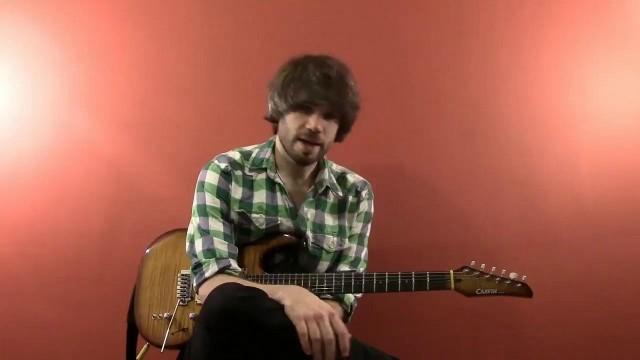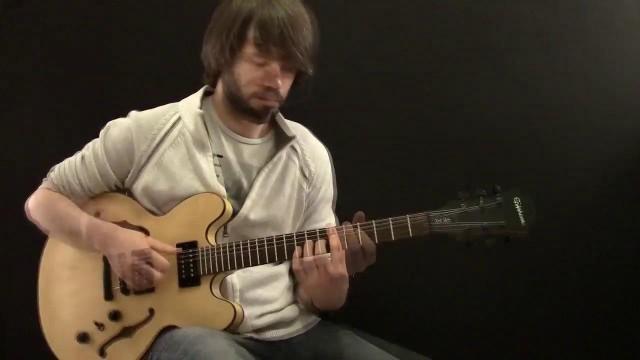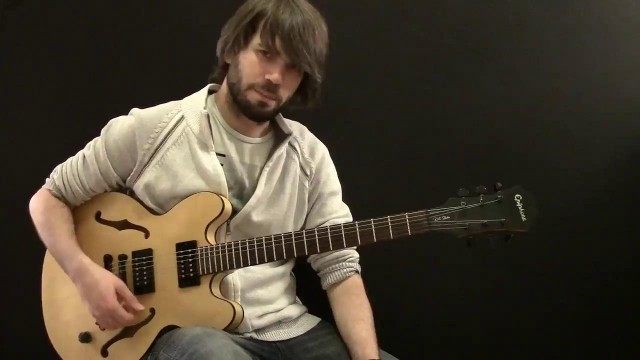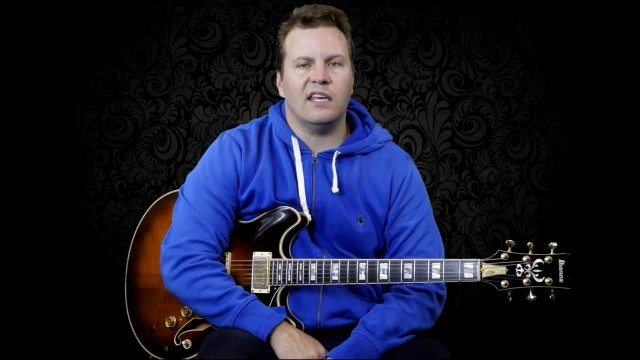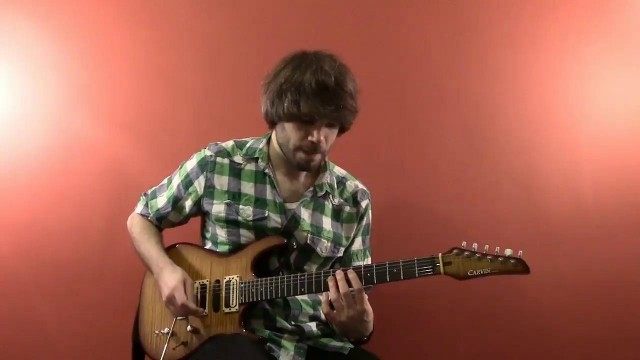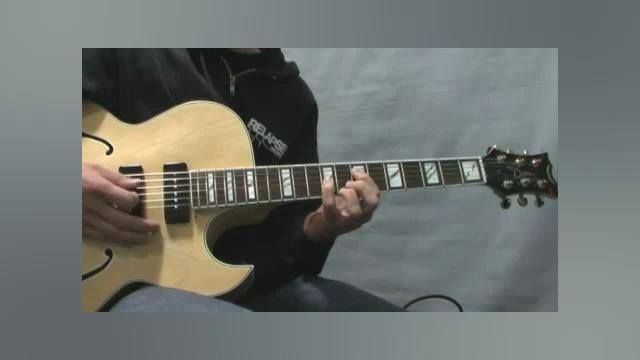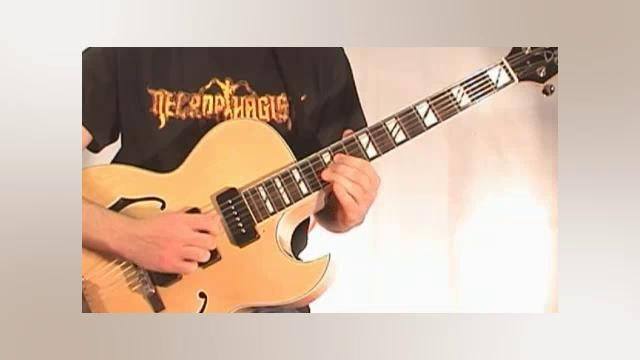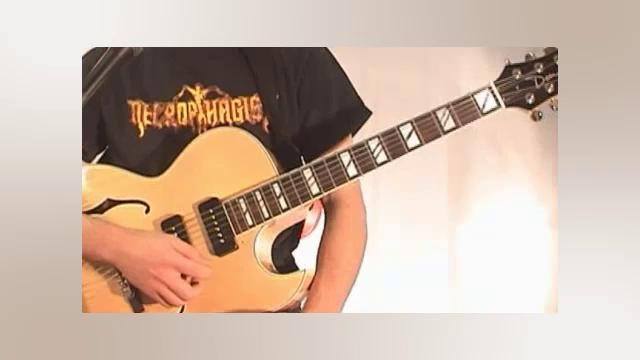Four to the bar swing, otherwise known as 'Gypsy Swing' or 'long short rhythm' is the most commonly used rhythm among traditional Jazz bands.
This lesson will be focused on using this rhythm to develop a better understanding of the swing feel. As well as hopefully adding a few new chords to your bank.
If you look at the first chart on your screen you will see four bars of chords. Example 1.a contains some new chords we will be using in our Autumn Leaves study.
Draw your attention to the notation on the staff for example 1.a. Each chord is notated in quarter notes but every second beat has a dot below the lowest note. These dots are called Staccatos. Staccato notes are rapid notes, almost percussive. They are played with more of a stabbing motion than a smooth strum.
Example 1.b shows us a more realistic representation of a chord chart. Jazz musicians often don't bother to write music the same as classical musicians might. So four diagonal lines across the stave will suffice.
At the bottom of the screen you will see another 32 bars of chords for Autumn Leaves. Some of them you will already know from our first lesson. I have also thrown in a few more common voicings for you to work on.
Play through the new chords and then try and play them over the Backing track supplied using the Gypsy Swing rhythm.
Feel free to use the chord voicings in which ever order you like. Memorize them to the point that you can call out a random chord and play it in different positions without having to refer to the music. Once you can do this, you can start improvising on the chords and use more of your energy to create melodic chordal passages. Rather than having spend all your time thinking where the next chord is.
Once you have mastered this rhythm and memorized the chords from both lessons join me in Part 3 where we will be learning a chord melody.









































